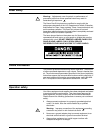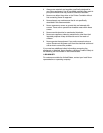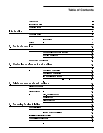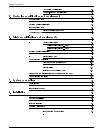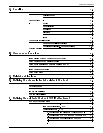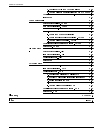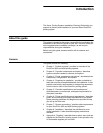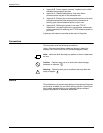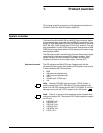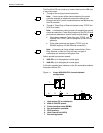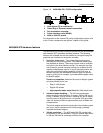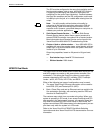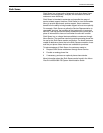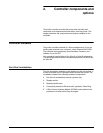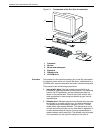
XEROX DOCUPRINT 4050/4090 IPS INSTALLATION PLANNING GUIDE 1-1
1. 1Product overview
This chapter provides an overview of the features and functions of
the Xerox DocuPrint 4050 IPS and the 4090 IPS.
System overview
The Xerox DocuPrint 4050 IPS and 4090 IPS are cut-sheet, duplex
printers that are fully compatible with the IBM AFP architecture. They
accept an IPDS data stream from any PSF eligible platform, including
MVS, VM, VSE, OS/2, OS/400 (with TCP/IP only), and AIX. They are
plug-compatible in the AFP/IPDS environment, and emulate an IBM
IPDS Group 3 page printer with the AFIG (Advanced Function Image
and Graphics) option.
The IPS printer series is a combination of proven Xerox print engines
matched with a high-performance RISC-based controller. Each
system consists of a Sun workstation controller and the printer,
sometimes referred to as the Image Output Terminal (IOT).
Host environments The IPS emulates an IBM AFP Group 3 page printer with the
Advanced Function Image and Graphics (AFIG) option and can print
in all the following PSF environments:
• MVS
• VM (channel-attached only)
• VSE (channel-attached only)
• OS/2
• OS/400 (with TCP/IP only)
• AIX
Note: Although PSF/VSE does not support TCP/IP directly, a
printing system with PSF/2, PSF/6000, or InfoPrint Manager can
attach to a PSF/VSE system and the PSF/2, PSF/6000, or InfoPrint
Manager can furnish the TCP/IP support for the IPS printer.
Note: There is no minimum host operating system software level
required to support IPS. The minimum PSF levels needed to support
the IPS are:
• PSF/MVS: V2.1
• PSF/VM: V2.1
• PSF/VSE: V2.2
• PSF/400: V3.2
• PSF/6000: V2.1
• PSF/2: V2.0



